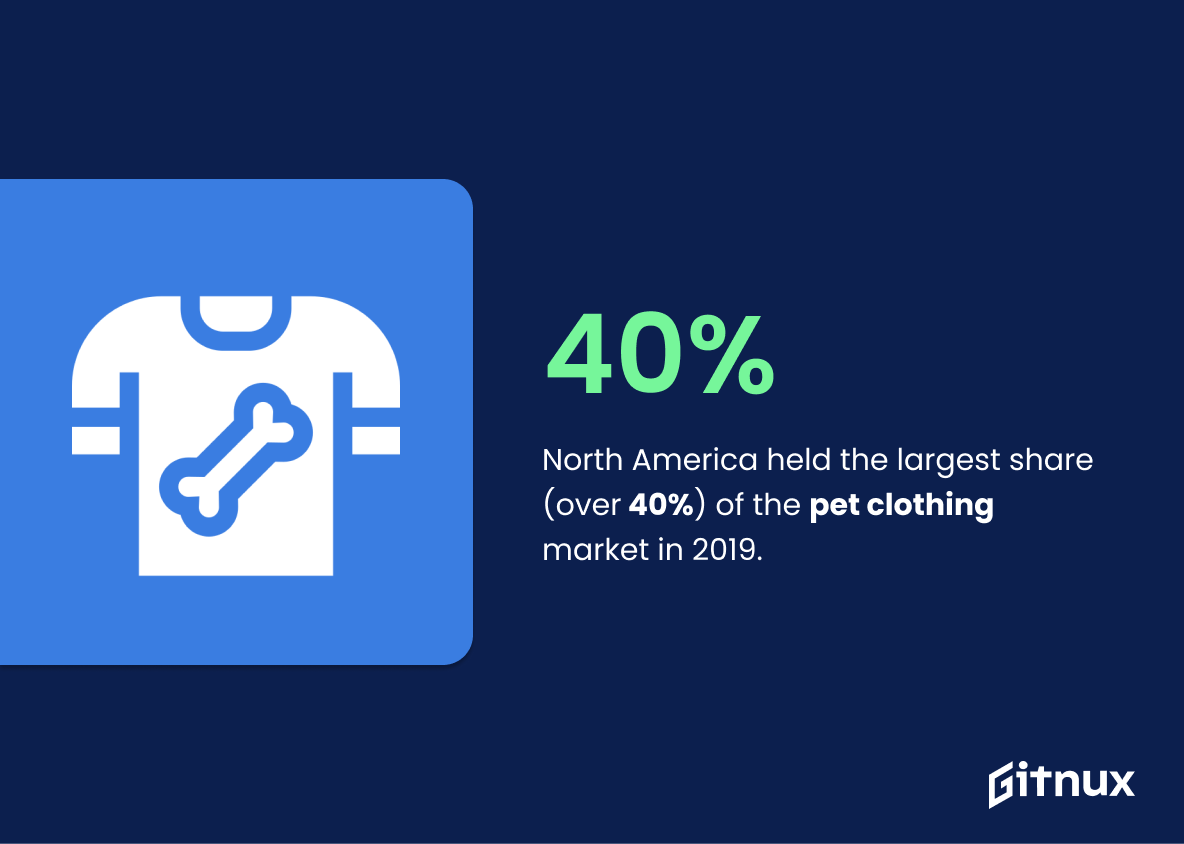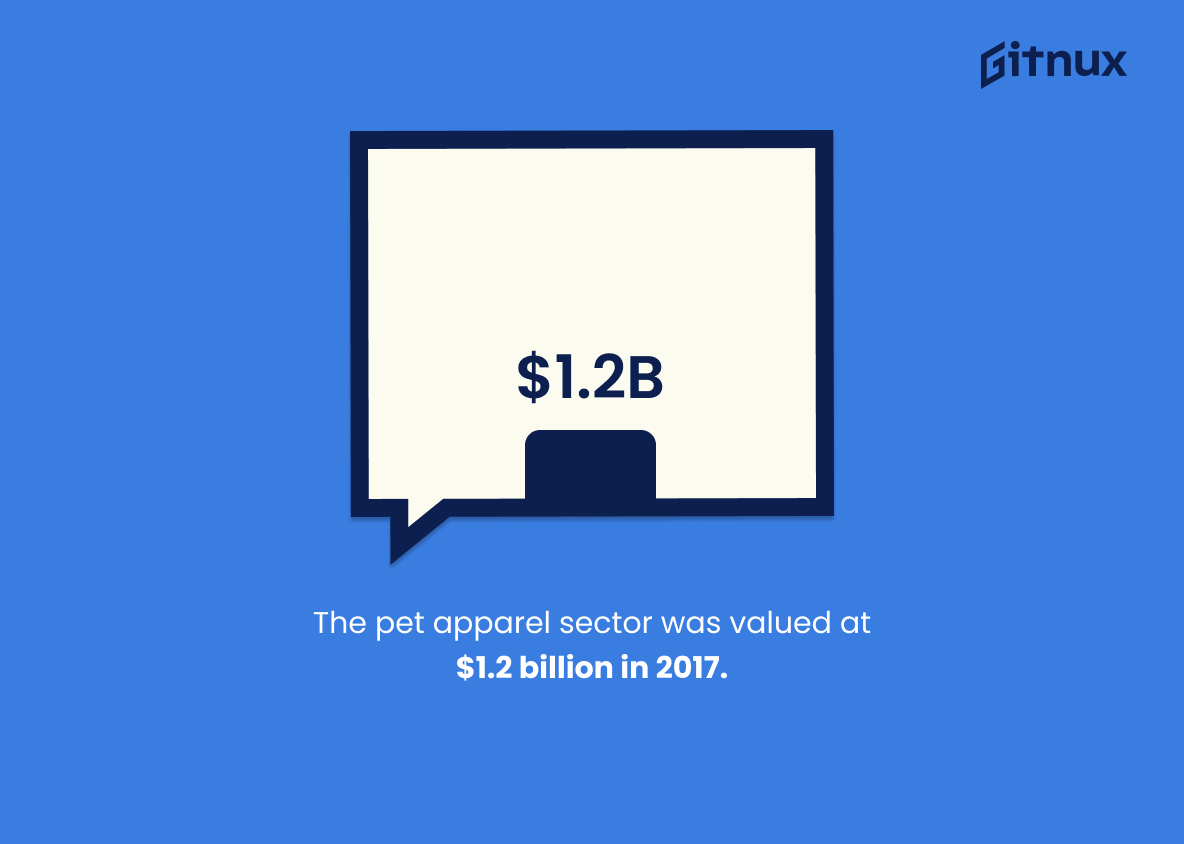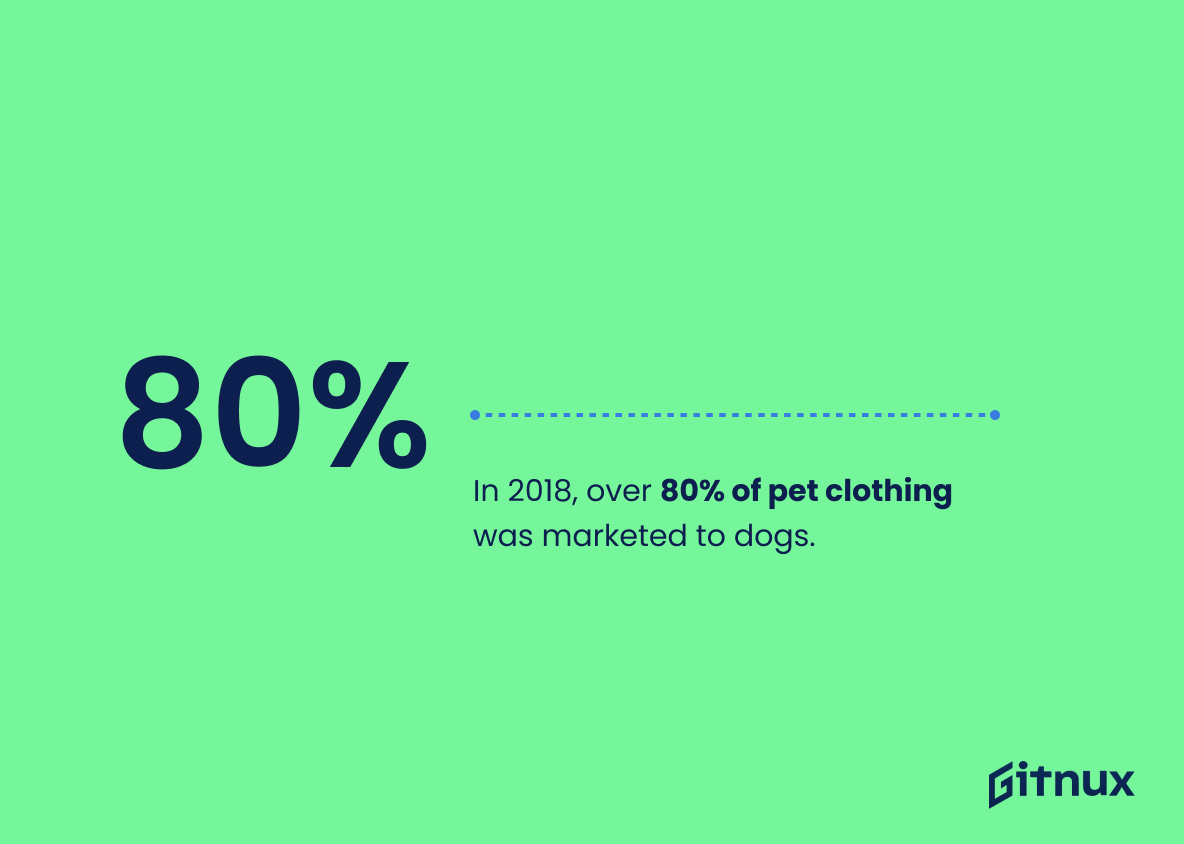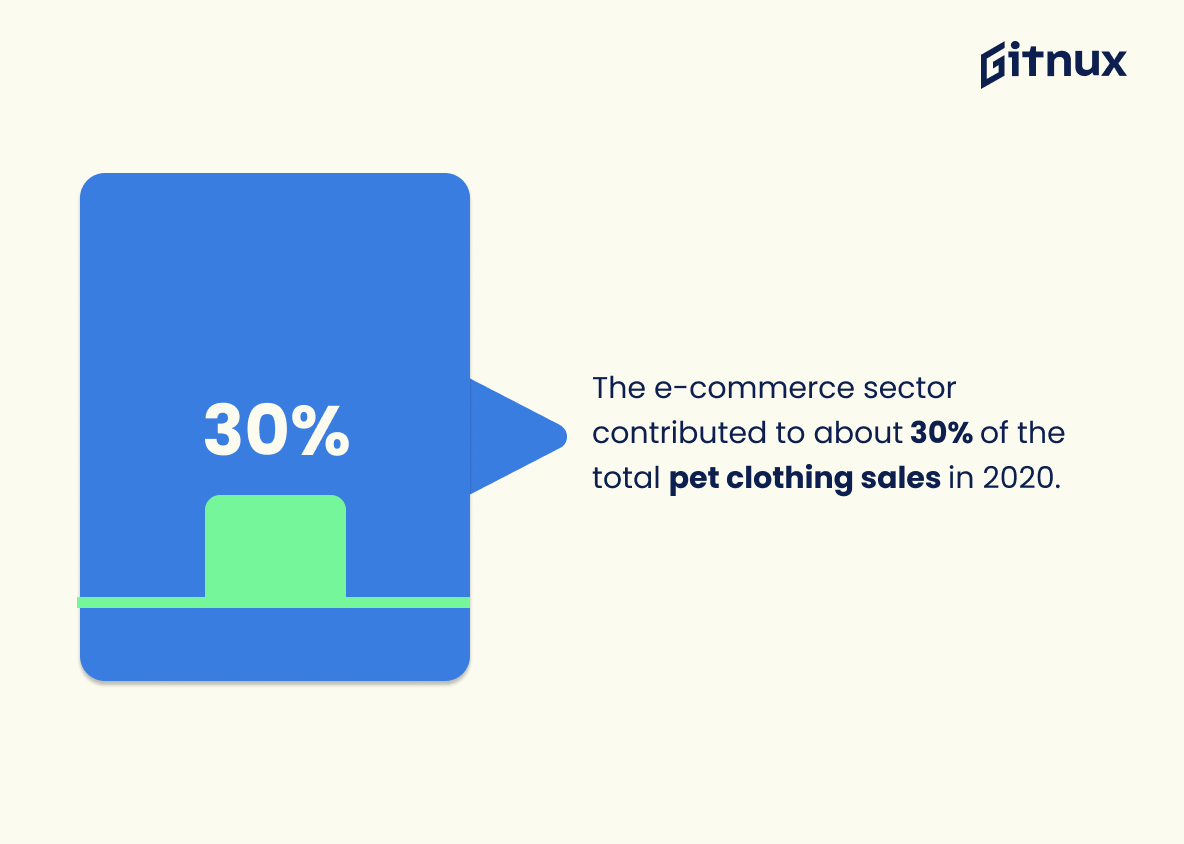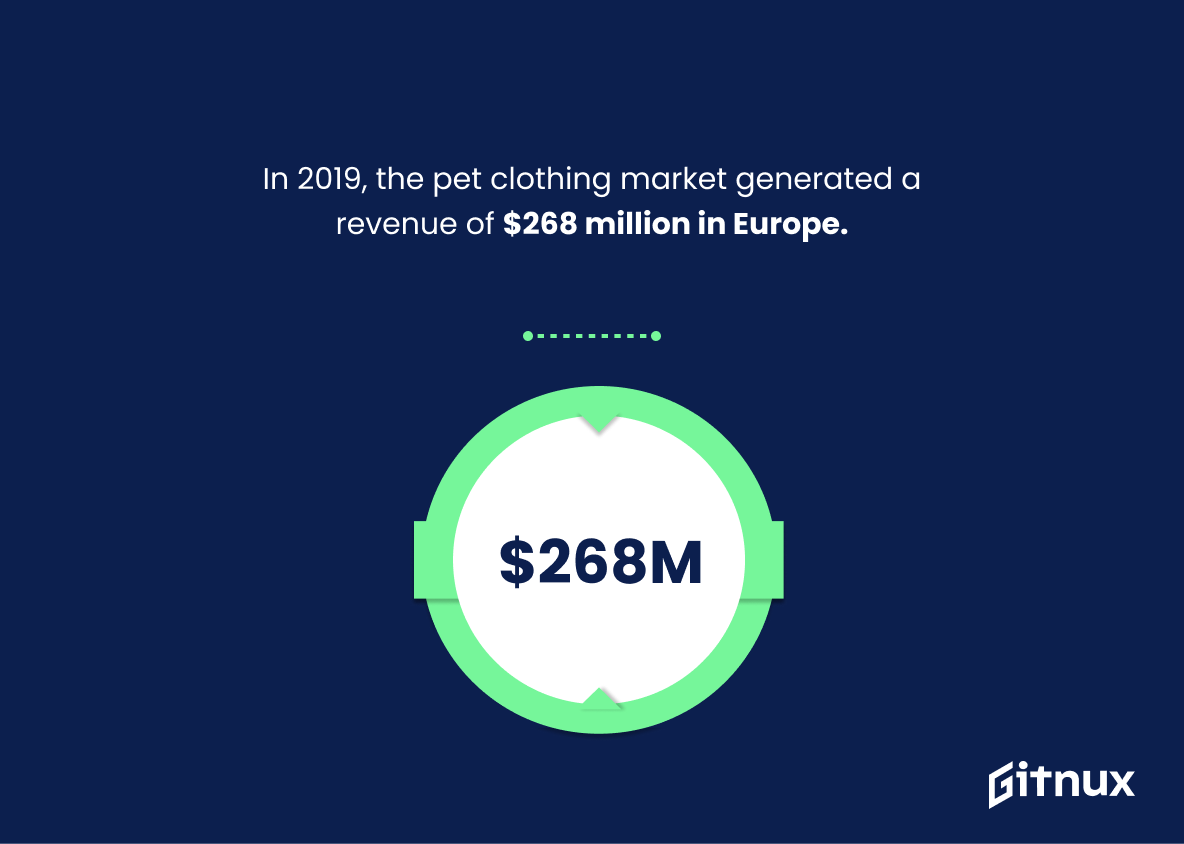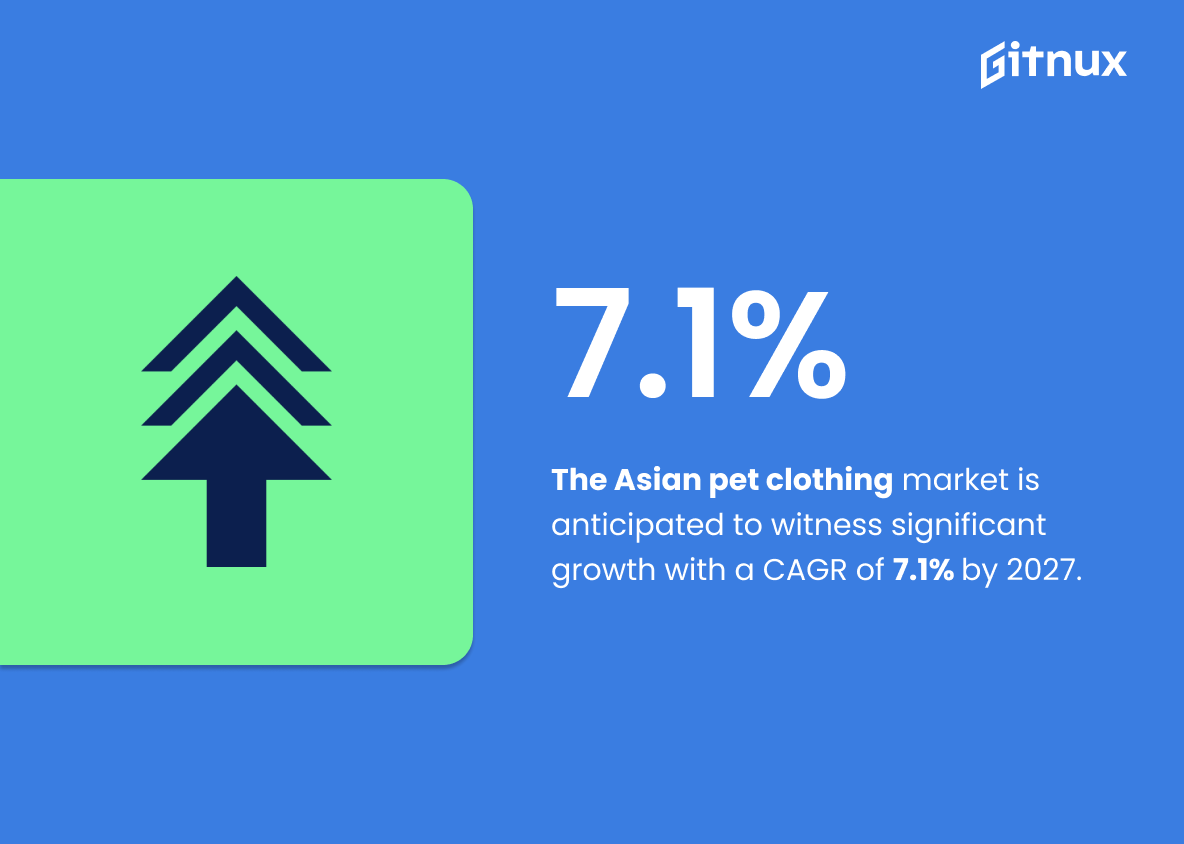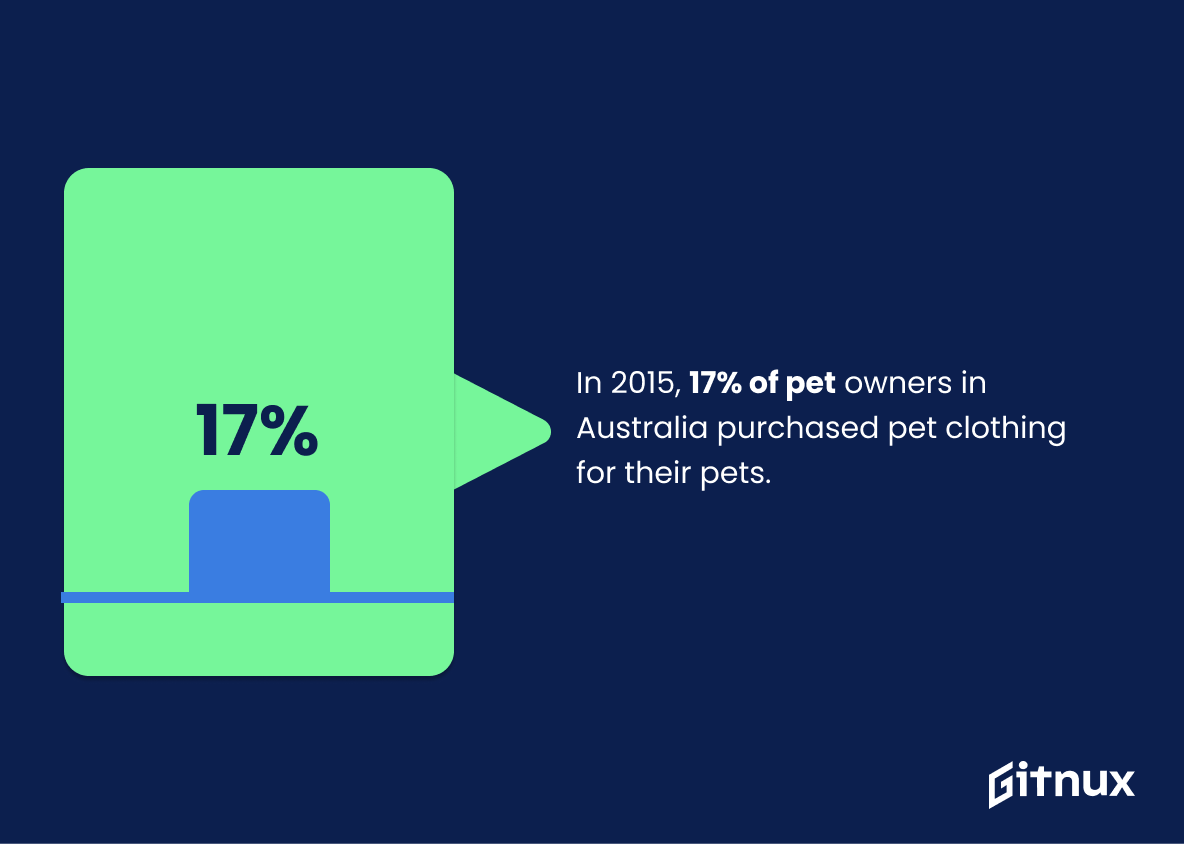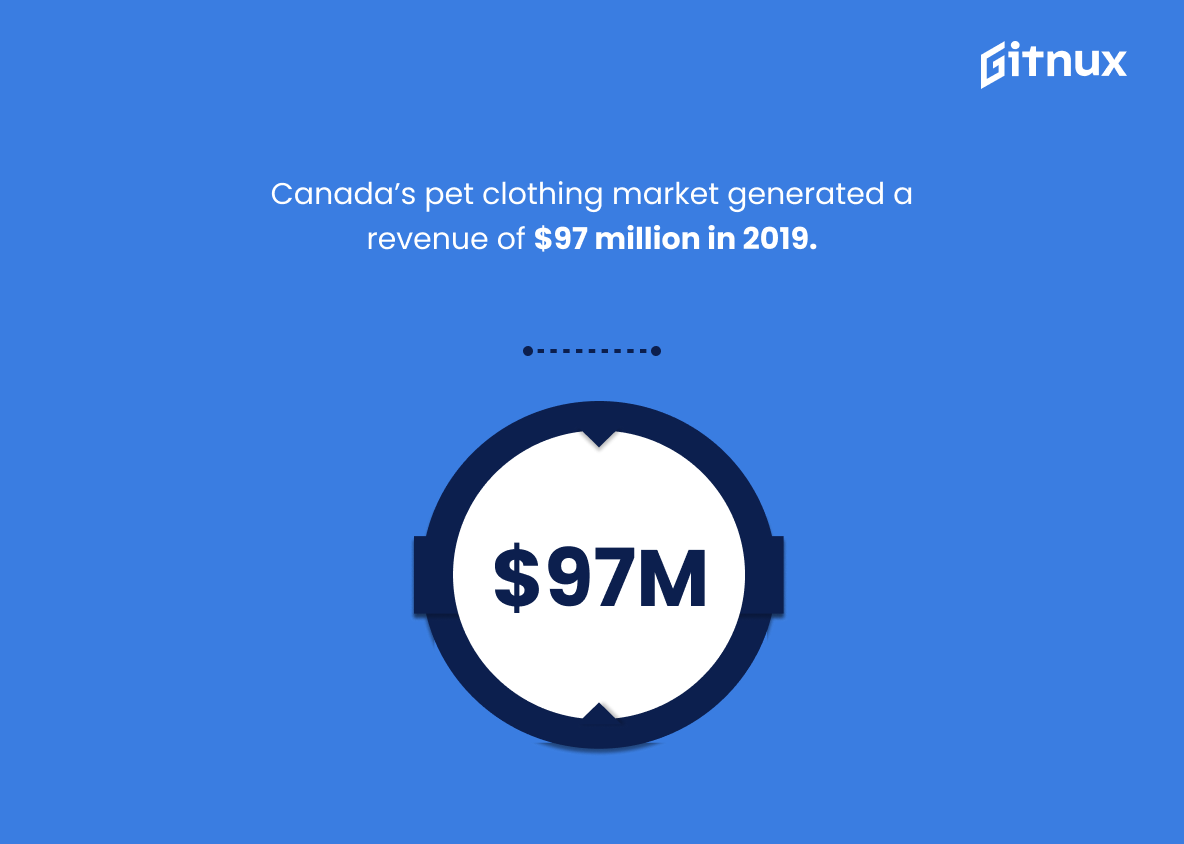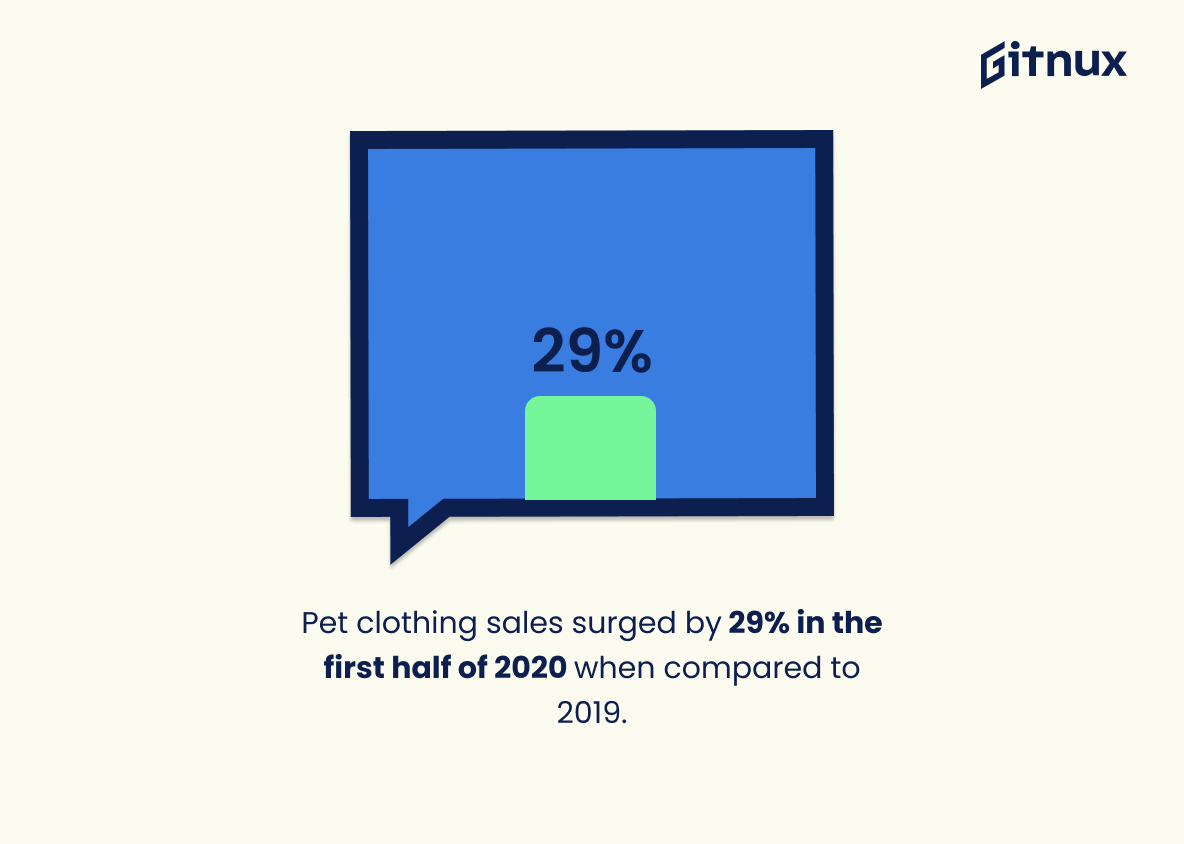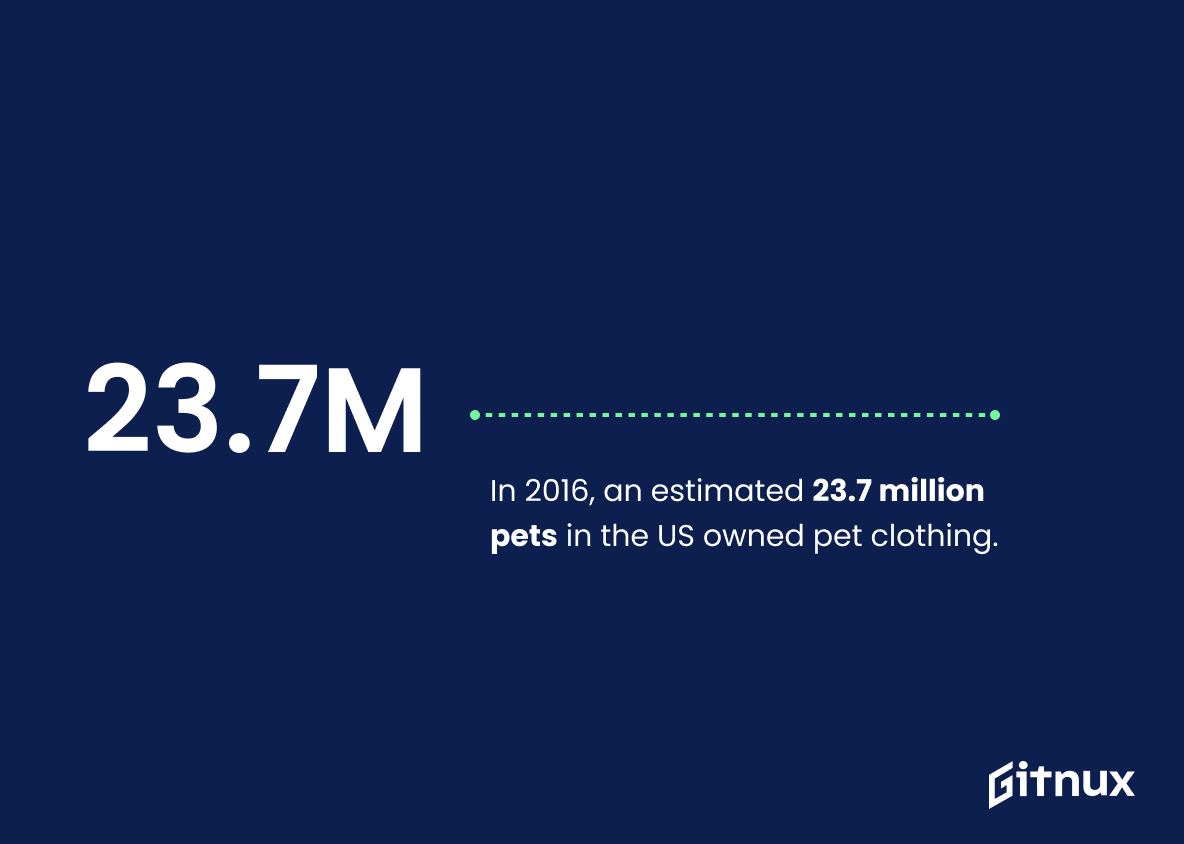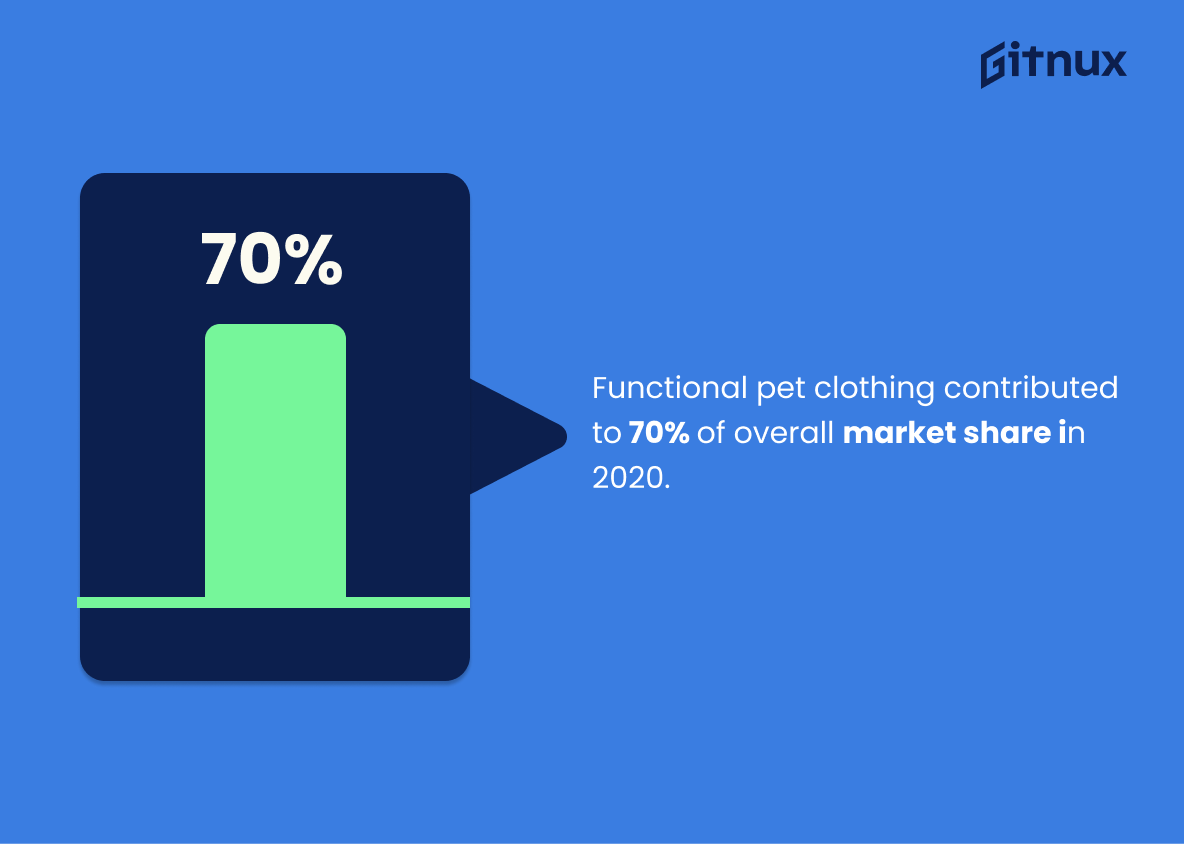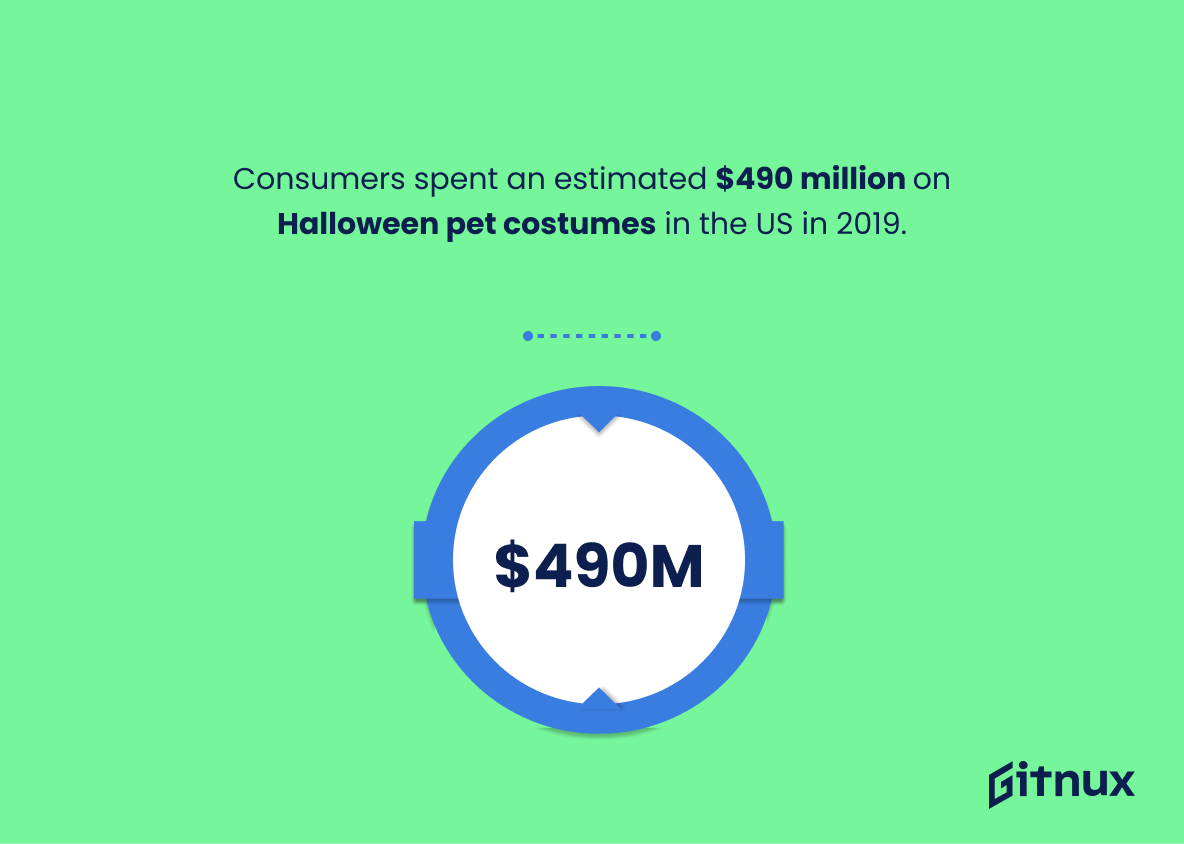Are you curious about the pet clothing industry? From Halloween costumes to functional wearables, this market has seen tremendous growth in recent years. In 2019, the global pet clothing industry was valued at $6.9 billion and is expected to grow at a CAGR of 5.5% between 2021 and 2027 according to Grand View Research. North America held the largest share (over 40%) of the pet clothing market in 2019 while Europe generated a revenue of $268 million that same year.
The e-commerce sector contributed 30% towards total sales in 2020 with independent retailers accounting for 59%. Furthermore, smart pet clothes with GPS tracking capabilities are estimated to reach $989 million by 2025 and luxury apparel segment was worth an impressive 1$42 billion last year. Read on as we explore more interesting statistics from around the world related to this booming industry.
This statistic is a testament to the immense size of the pet clothing industry, highlighting its immense potential for growth. It also serves as a reminder of the importance of this industry, as it has become a multi-billion dollar industry in just a few years. This statistic is a great starting point for any blog post about the Pet Clothing Industry, as it provides a solid foundation for further exploration into the industry’s trends and developments.
The pet clothing industry is expected to grow at a CAGR of 5.5% between 2021 and 2027.
This statistic is a testament to the potential of the pet clothing industry, indicating that it is likely to experience a steady growth over the next few years. This is an important piece of information for anyone interested in the pet clothing industry, as it provides an indication of the industry’s future prospects. Furthermore, it can be used to inform decisions about investments, marketing strategies, and other business decisions.
Pet Clothing Industry Statistics Overview
North America held the largest share (over 40%) of the pet clothing market in 2019.
The fact that North America held the largest share of the pet clothing market in 2019 is a testament to the immense popularity of pet clothing in the region. It is a clear indication that pet owners in North America are willing to invest in clothing for their pets, and that the pet clothing industry is thriving in the region. This statistic is an important piece of information for anyone looking to gain insight into the pet clothing industry.
The pet apparel sector was valued at $1.2 billion in 2017.
This statistic is a testament to the immense potential of the pet apparel sector. It shows that the industry is growing rapidly and is a lucrative market for entrepreneurs and investors alike. It also indicates that pet owners are increasingly willing to invest in clothing and accessories for their furry friends, which is a positive sign for the industry. This statistic is an important indicator of the health of the pet clothing industry and provides valuable insight into its future prospects.
In 2018, over 80% of pet clothing was marketed to dogs.
This statistic is indicative of the fact that the pet clothing industry is heavily skewed towards dogs. It shows that the majority of pet clothing is designed and marketed for dogs, leaving cats and other animals with fewer options. This is an important statistic to consider when discussing the pet clothing industry, as it highlights the need for more inclusive options for all types of pets.
The e-commerce sector contributed to about 30% of the total pet clothing sales in 2020.
This statistic is a testament to the growing influence of the e-commerce sector in the pet clothing industry. It highlights the fact that online shopping has become a major source of revenue for pet clothing companies, and that the industry is increasingly relying on digital platforms to reach customers. This statistic is an important indicator of the industry’s current state and its potential for growth in the future.
In 2019, the pet clothing market generated a revenue of $268 million in Europe.
This statistic is a testament to the booming pet clothing industry in Europe. It shows that the market is growing and that pet owners are increasingly investing in clothing for their furry friends. This statistic is an important indicator of the industry’s success and provides valuable insight into the current state of the pet clothing market in Europe.
The Asian pet clothing market is anticipated to witness significant growth with a CAGR of 7.1% by 2027.
This statistic is a powerful indicator of the potential of the Asian pet clothing market. It suggests that the industry is likely to experience a steady growth in the coming years, with a CAGR of 7.1% by 2027. This is an important piece of information for anyone interested in the pet clothing industry, as it provides an insight into the potential of the market and the opportunities it presents.
The pet clothing market in the United Kingdom was worth £610 million in 2020.
This statistic is a testament to the immense size of the pet clothing market in the United Kingdom. It shows that the industry is thriving and that there is a large demand for pet clothing products. This statistic is important for anyone interested in the pet clothing industry, as it provides a snapshot of the current market size and can be used to inform decisions about investments, marketing strategies, and product development.
The United States pet clothing market is expected to reach a valuation of $3.24 billion by 2023.
This statistic is a testament to the immense potential of the pet clothing industry. It shows that the market is expected to grow significantly in the coming years, indicating that now is the perfect time to invest in the pet clothing industry. With the right strategies and investments, businesses can capitalize on this growth and make a profit.
In 2015, 17% of pet owners in Australia purchased pet clothing for their pets.
This statistic is a telling indication of the growing popularity of pet clothing in Australia. It shows that a significant portion of pet owners are willing to invest in clothing for their pets, which is a strong indication of the potential of the pet clothing industry in the country.
Canada’s pet clothing market generated a revenue of $97 million in 2019.
This statistic is a testament to the booming pet clothing industry in Canada, demonstrating the immense potential of the market. It is a clear indication that pet clothing is a lucrative business, and provides an opportunity for entrepreneurs to capitalize on the growing demand for pet apparel. Furthermore, this statistic serves as a benchmark for the industry, allowing businesses to measure their performance against the industry average.
In 2021, the pet clothing industry’s winter clothes segment accounted for approximately 60% of the market share.
This statistic is a telling indication of the pet clothing industry’s winter clothes segment’s success in 2021. It demonstrates that the segment has been able to capture a significant portion of the market share, indicating that it is a popular choice among pet owners. This statistic is important to consider when discussing the pet clothing industry’s overall performance in 2021.
Pet clothing sales surged by 29% in the first half of 2020 when compared to 2019.
This statistic is a testament to the growing popularity of pet clothing, demonstrating that the industry is thriving despite the challenges of 2020. It is a clear indication that pet owners are increasingly investing in clothing for their furry friends, and that the pet clothing industry is a lucrative market. This statistic is an important piece of information for anyone interested in the pet clothing industry, as it provides insight into the current state of the market and its potential for growth.
In 2016, an estimated 23.7 million pets in the US owned pet clothing.
This statistic is a testament to the growing popularity of pet clothing in the US. It shows that an increasing number of pet owners are investing in clothing for their furry friends, indicating a strong demand for pet clothing products. This is an important indicator of the potential of the pet clothing industry and its ability to generate revenue.
Functional pet clothing contributed to 70% of overall market share in 2020.
This statistic is a testament to the success of functional pet clothing in the pet clothing industry in 2020. It highlights the fact that pet owners are increasingly looking for clothing that not only looks good, but also serves a practical purpose. This statistic is a clear indication that the pet clothing industry is growing and that pet owners are becoming more aware of the benefits of functional pet clothing.
Consumers spent an estimated $490 million on Halloween pet costumes in the US in 2019.
This statistic is a testament to the booming pet clothing industry, demonstrating the immense popularity of pet costumes in the US. It shows that consumers are willing to invest in their pets’ comfort and style, and that the pet clothing industry is a lucrative market. This statistic is a valuable insight into the pet clothing industry, and provides a glimpse into the potential of this industry.
In 2020, the luxury pet clothing segment was valued at $1.42 billion.
This statistic is a testament to the booming pet clothing industry, highlighting the immense potential of the luxury pet clothing segment. It shows that the market is growing and that there is a demand for pet clothing, which could be a great opportunity for entrepreneurs and businesses to capitalize on. Furthermore, it provides insight into the size of the market and the potential for growth, which could be useful for those looking to invest in the pet clothing industry.
Conclusion
The pet clothing industry is a rapidly growing market, with the global industry valued at $6.9 billion in 2019 and expected to grow at a CAGR of 5.5% between 2021 and 2027. North America held the largest share (over 40%) of this market in 2019, followed by Europe which generated revenue worth $268 million that same year. The e-commerce sector contributed to about 30% of total sales in 2020 while independent retailers accounted for 59%.
Functional pet clothing was responsible for 70% of overall market share in 2020, while luxury pet clothing was estimated to be worth $1.42 billion that same year. Consumers spent an estimated $490 million on Halloween costumes alone in 2019, demonstrating how popular these products have become among both pets and their owners alike.
References
0. – https://www.upgifs.com
1. – https://www.www.worldatlas.com
2. – https://www.www.ctvnews.ca
3. – https://www.www.globenewswire.com
4. – https://www.www.marketwatch.com
5. – https://www.www.today.com
6. – https://www.www.petfoodindustry.com
7. – https://www.www.prnewswire.com
8. – https://www.www.thepaws.net
9. – https://www.www.statista.com
10. – https://www.www.transparencymarketresearch.com
11. – https://www.www.caninejournal.com
12. – https://www.www.imarcgroup.com
13. – https://www.www.grandviewresearch.com
14. – https://www.www.businesswire.com
15. – https://www.petpedia.co
16. – https://www.www.bbc.com
17. – https://www.www.ypulse.com
